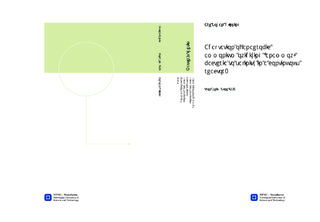| dc.description.abstract | The anaerobic ammonium oxidation (anammox) process is the most recent discovery in the nitrogen cycle on Earth. The anammox process is a microbial process where ammonium (NH4+) is anaerobically oxidized to gaseous nitrogen. The electron acceptor of the process is nitrite (NO2-), with a theoretical molar consumption ratio of NH4+/NO2- of 1:1.32. This biological conversion is attractive as it presents the opportunity for a nitrogen removal process that improves the overall energy and material balance in full-scale treatment systems. Marine aquaculture effluents are rich in nitrogenous compounds, e.g. proteins and ammonium, thus being a candidate for applying the anammox process. The report presented is a master thesis project which is a part of a pilot Ph.D. project at the Department of Biotechnology at the Norwegian University of Science and Technology (NTNU). Two of the major goals in this pilot are to develop start-up strategies for the application of the anammox process for marine aquaculture effluents, and to monitor the dynamics of the microbial community during the adaptation to marine conditions.The major goal of this study was to adapt anammox bacteria to salinity (NaCl) in a continuous up flow reactor. The secondary goal was to do initial analyses of the microbial community's dynamics during the adaptation. The reactor was inoculated with activated sludge from Norsk Institutt for Vannforskning. The continuous reactor was operated for 147 days, and the reactor was monitored by measuring the concentrations of N-NO2-, N-NH4+ and N-NO3- in the inlet and the effluent of the reactor. The adaptation to salinity (NaCl) was started at day 47 by adding NaCl to the medium fed to the reactor. The community composition in two samples of the activated sludge in the reactor were analyzed by the use of the Polymerase Chain Reaction (PCR) with universal bacterial primers, denaturing gradient gel electrophoresis (DGGE) and statistical methods in computational programs (Gel2k and PAST). The samples were sampled at day 44 (0 g NaCl/L) and 114 (3.0 g NaCl/L) of continuous operation. The major result of the experiment was acclimation to 3 g NaCl/L by the microbial community in the reactor. The molecular analyses indicated that the adaptation was caused by acclimation of the original community, because the microbial composition in the samples were similar.Further work should be performed to reach the long-term goals of the pilot project, both in terms of reaching higher levels of adaptation and to do more thoroughly analyses of the community dynamics as a response to salt adaptation. The biomass in the reactor could be split in two parallel reactors. One of them could be the reference with only NaCl as the selective factor, and the other with a mixture of NaCl and KCl to study if K+ has an antagonistic effect. Another option is to add parts of sea water to the mineral medium, because marine conditions is the real target of the project. The molecular experiments should be optimized by the use of specific anammox primers, and other methods such as fluorescent in situ hybridization (FISH) should also be considered | nb_NO |

